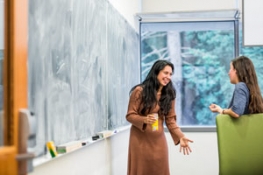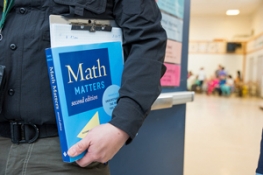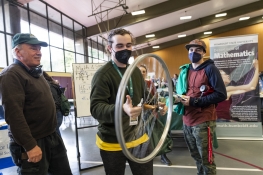Lamberson Ecology Lecture
The series is hosted by Humboldt’s Department of Mathematics and its name and funding from Roland Lamberson, Arcata, professor of mathematics at Cal Poly Humboldt from 1980 to 2004. Professor Lamberson has made substantial contributions in the application of mathematics to ecology and natural resources.
MOST RECENT LECTURE
Dr. Elise Zipkin will deliver the Lamberson Ecology Lecture:
Why Are Monarch Butterflies Declining?
Thursday, April 18, 2024
WDFS 258, 6:00 P.M.
Dr. Elise Zipkin is the Red Cedar Distinguished Associate Professor, Michigan State University
Past Lamberson Ecology speakers
March 12 2019 Dr. Trent McDonald, WEST Environmental & Statistical Consultants
March 2018 Barry Noon, Colorado State University
March 2017 Andy Royle, USGS Patuxent Wildlife Research Center
February 2016 Dan Doak University of Colorado, Boulder
February 2015 Brian Dennis of the University of Idaho
March 2014 - Wayne Getz of the University of California at Berkeley.
February 2013 - Colin W. Clark of the University of British Columbia
December 2011 - Dr. Simon Levin, Princeton University, Professor of Biology and Director of the Center for BioComplexity.
April 2011 - Dr. Alan Hastings, Distinguished Professor of Environmental Science and Policy at UC Davis
February 2010 - Dr. Marc Mangel, Distinguished Professor of Applied Mathematics and Statistics at University of California-Santa Cruz (UCSC) and a member of the California Academy of Science and the Royal Society of Edinburgh









